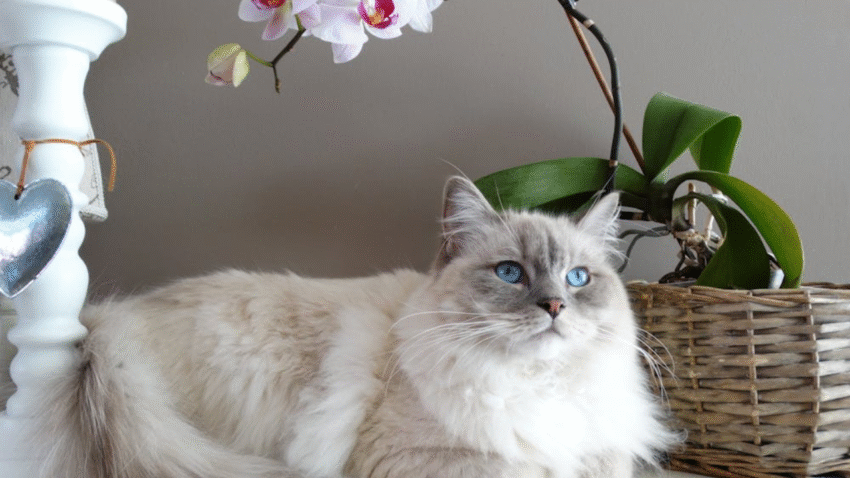Introduction
Worried that your indoor cat is gaining too much weight? You’re not alone. Obesity is one of the most common (and preventable) health issues in domestic cats—especially those who live strictly indoors. In this guide, you’ll learn how to prevent obesity in indoor cats with smart feeding strategies, exercise routines, and lifestyle changes that support a healthy weight and happier life.
Even if your cat seems content lounging around, keeping them fit is key to their long-term health.
Why Obesity is a Serious Risk for Indoor Cats
Indoor cats have fewer opportunities for spontaneous activity than outdoor cats. Without careful monitoring, they can easily consume more calories than they burn—leading to gradual, dangerous weight gain.
Here’s why obesity matters:
- Increases risk of diabetes, arthritis, and heart disease
- Shortens lifespan
- Reduces mobility and quality of life
- Leads to chronic inflammation and joint pain
Obesity isn’t just cosmetic—it’s a major health concern that affects every part of your cat’s life. The good news? It’s also one of the most preventable conditions.
Step-by-Step Guide to Preventing Obesity in Indoor Cats
Here’s how to keep your indoor cat lean, healthy, and full of life.
1. Measure Food Portions Accurately
- Avoid free-feeding (leaving food out all day). Instead, serve measured meals.
- Use a kitchen scale or measuring cup to portion food based on the package guidelines and your vet’s advice.
- Watch the calorie count on your cat’s food—some dry foods are very calorie-dense.
💡 Tip: Always base feeding on your cat’s ideal weight, not their current weight if they’re overweight.
2. Set a Feeding Schedule
- Feed adult cats 2–3 times per day to control portions and metabolism.
- Consistent meal times reduce begging and allow better digestion.
- Avoid giving in when your cat cries for food outside of scheduled times.
Scheduled feeding keeps both appetite and weight in check.
3. Choose High-Quality, Nutrient-Dense Food
- Look for food rich in animal-based protein, moderate in fat, and low in carbohydrates.
- Avoid cheap fillers like corn, wheat, or by-products.
- Wet food can be beneficial—it has fewer calories per serving and adds hydration.
Ask your vet if a weight-management formula is right for your cat.
4. Limit Treats and Table Scraps
- Treats should make up no more than 10% of your cat’s daily calories.
- Use treats strategically for training or enrichment—not as snacks.
- Avoid feeding human food—most is too high in calories, salt, or fat for cats.
If you give treats, account for them by reducing meal portions slightly.
5. Increase Daily Physical Activity
Indoor cats don’t get enough exercise naturally. You’ll need to encourage it:
- Play 2–3 times per day with interactive toys like feather wands, laser pointers, or toy mice.
- Rotate toys to prevent boredom.
- Use vertical space—cat trees, shelves, or climbing furniture—to promote jumping and climbing.
Even 15 minutes of play per session can make a huge difference.
6. Use Food Puzzles and Enrichment
- Try treat-dispensing balls or puzzle feeders that force your cat to work for their food.
- Hide small portions of kibble around the house to simulate hunting behavior.
- Use slow feeder bowls to prevent fast eating and help them feel full.
Mental stimulation encourages activity and reduces boredom-based eating.
7. Monitor Weight and Body Condition Regularly
- Weigh your cat monthly using a baby scale or during vet visits.
- Use a body condition score (BCS) chart to check:
- You should be able to feel but not see ribs.
- Your cat should have a visible waist from above.
Early detection of weight gain makes prevention easier than reversal.
Common Mistakes to Avoid
Avoid these habits that can contribute to weight gain in indoor cats:
- Free-feeding dry food
➤ This often leads to overeating, especially if your cat is bored. - Giving treats without limits
➤ Treats may be tiny—but the calories add up fast. - Skipping playtime
➤ Indoor cats need active stimulation every day. - Not adjusting food for age or activity
➤ Older or less active cats require fewer calories. - Feeding based on the cat’s demands
➤ Many cats cry for food out of habit—not hunger. Don’t let vocalization dictate meals.
Extra Tips & Recommendations
Here are some additional strategies for long-term success:
- Use an automatic feeder to regulate meals and reduce begging.
- Get a second cat or interactive toys to encourage more daily activity.
- Talk to your vet before making drastic dietary changes, especially for overweight cats.
- Track habits with a feeding and weight log to stay consistent.
Want more support with mealtime habits? Check out our article How to Feed Your Cat on a Consistent Daily Schedule for guidance.
Conclusion
Preventing obesity in indoor cats is all about balance—between food intake, activity, and engagement. By setting a routine, measuring meals, and making daily playtime a priority, you’ll help your cat stay at a healthy weight and live a longer, more energetic life.
🐾 Don’t wait until the scale goes up—start building healthy habits today and give your indoor cat the active, happy life they deserve.
